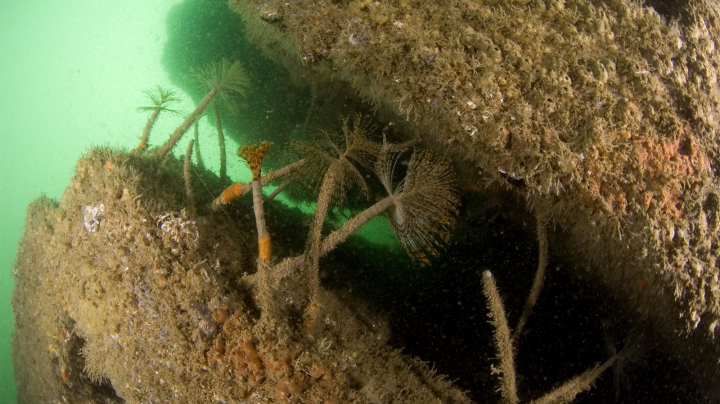
The quality of the Barcelona coastline’s marine environment has improved considerably thanks to a series of initiatives carried out over the last few years throughout the area: the removal of the submarine sludge outfall with the deployment of the thermal-drying system; the extension of the Besòs water-purification plant with biological treatment and remodelling; the completed environmental recovery of the final section of the River Besòs; the construction of a new rainwater-storage tank as part of the work carried out on the Fòrum 2004, etc.
The Barcelona Reef Park was created in 2003. The PEBCN's goal was for this area to become, over time, a place with similar features to those of rocky seabeds, given that this space simulates the surfaces and holes of these natural habitats, and thereby improve the state of the degraded sea floor along Barcelona's coastline, as well as become an area for carrying out underwater activities and helping to reclaim the area's fish-farming communities.
The generation of biotopes through groupings of structures forming a large artificial reef has enabled the sedimentary sea floor to be colonised, thanks to the introduction of hard substrates which have increased the environment's heterogeneity and accordingly encouraged the diversity along the strongly anthropized sea floor. Barcelona Zoo had been responsible since 2009 for the scientific and technical monitoring aimed at obtaining characteristic data on the state of the submerged structured, their colonisation by living creatures, their possible impact on the nearby beaches and coasts and the evolution of the fishing and marine communities.
The degree of reclamation of all the submerged structures is currently above 100%, including metallic elements, as several layers of organisms are located on the rough, concrete, artificial substrate. The presence of macroalgal components in all the structures is remarkable. Despite the low level of light due to the modules’ depth and the degree of turbidity of the water, an increasingly numerous establishments of primary producers (algae) has been detected which receive their energy directly from the solar light that penetrates the water. These structures contain various species of sponges, cnidaria, sedentary bristle worms, bryozoa, bivalve molluscs, sea squirts, corresponding to the food web's low-level components. Even so, the abundance of predatory organisms, such as prosobranch and opisthobranch molluscs and crustaceans, is significant and shows that the succession is evolving towards communities with a more diversified and stable system food web, creating a more complex biotic structure. The presence of fish associated with the structures may be considered almost as abundant and diverse as expected for rocky substrates near the entity and the module’s bathymetric location.




